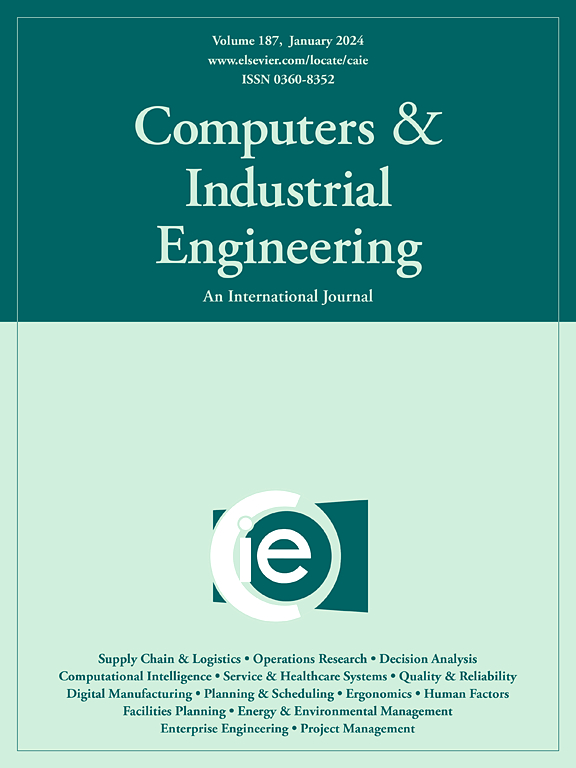GIS-integrated optimization approaches for the culvert maintenance planning and scheduling problem
IF 6.5
1区 工程技术
Q1 COMPUTER SCIENCE, INTERDISCIPLINARY APPLICATIONS
引用次数: 0
Abstract
Culvert preservation is essential for extending the lifecycle of these critical infrastructure components. Given the limited annual budgets for maintenance and rehabilitation, it is not feasible to maintain all culverts at optimal performance. Traditional system-level maintenance approaches are often too broad and not cost-effective due to the complexity of culverts, which consist of various components such as barrels, endwalls, junctions, and energy dissipation devices. To address these challenges, this paper proposes a comprehensive framework for optimizing culvert maintenance decisions. A mathematical model and a genetic algorithm are introduced to solve the problem, considering budget limitations, available labor, and other operational constraints. The GIS system is used for extracting spatial information, calculating grouping discounts, and visualizing results. The computational results show that the mathematical model performs well, solving all instances to optimality within seconds. The GA serves as an alternative approach, particularly in cases where a self-contained method is required or where further solution improvement is desired. Using Anderson County as a case study, three key findings are observed: increasing the grouping size for high-requirement jobs improves efficiency, available person-hours significantly impact the choice between in-house and contractor work, and budget increases show diminishing returns after a certain threshold. The findings of this research can help the Tennessee Department of Transportation (TDOT) make more informed and cost-effective decisions regarding culvert maintenance.
涵洞维修计划调度问题的gis集成优化方法
涵洞保护对于延长这些关键基础设施组件的生命周期至关重要。由于每年用于维修和修复的预算有限,不可能使所有涵洞保持最佳性能。由于涵洞的复杂性,传统的系统级维护方法往往过于宽泛,而且成本效益不高,涵洞由各种组件组成,如桶、端壁、结和耗能装置。为了应对这些挑战,本文提出了一个优化涵洞维护决策的综合框架。考虑到预算限制、可用劳动力和其他操作约束,引入数学模型和遗传算法来解决问题。利用GIS系统提取空间信息,计算分组折扣,并将结果可视化。计算结果表明,该数学模型性能良好,可在数秒内求解出所有实例的最优解。遗传算法可作为一种替代方法,特别是在需要独立方法或需要进一步改进解决方案的情况下。以安德森县为例,我们观察到三个关键发现:增加高要求工作的分组规模可以提高效率,可用的人-小时显著影响内部工作和承包商工作之间的选择,预算增加在一定阈值后呈现递减收益。这项研究的结果可以帮助田纳西州交通部(TDOT)在涵洞维修方面做出更明智和更具成本效益的决策。
本文章由计算机程序翻译,如有差异,请以英文原文为准。
求助全文
约1分钟内获得全文
求助全文
来源期刊

Computers & Industrial Engineering
工程技术-工程:工业
CiteScore
12.70
自引率
12.70%
发文量
794
审稿时长
10.6 months
期刊介绍:
Computers & Industrial Engineering (CAIE) is dedicated to researchers, educators, and practitioners in industrial engineering and related fields. Pioneering the integration of computers in research, education, and practice, industrial engineering has evolved to make computers and electronic communication integral to its domain. CAIE publishes original contributions focusing on the development of novel computerized methodologies to address industrial engineering problems. It also highlights the applications of these methodologies to issues within the broader industrial engineering and associated communities. The journal actively encourages submissions that push the boundaries of fundamental theories and concepts in industrial engineering techniques.
 求助内容:
求助内容: 应助结果提醒方式:
应助结果提醒方式:


